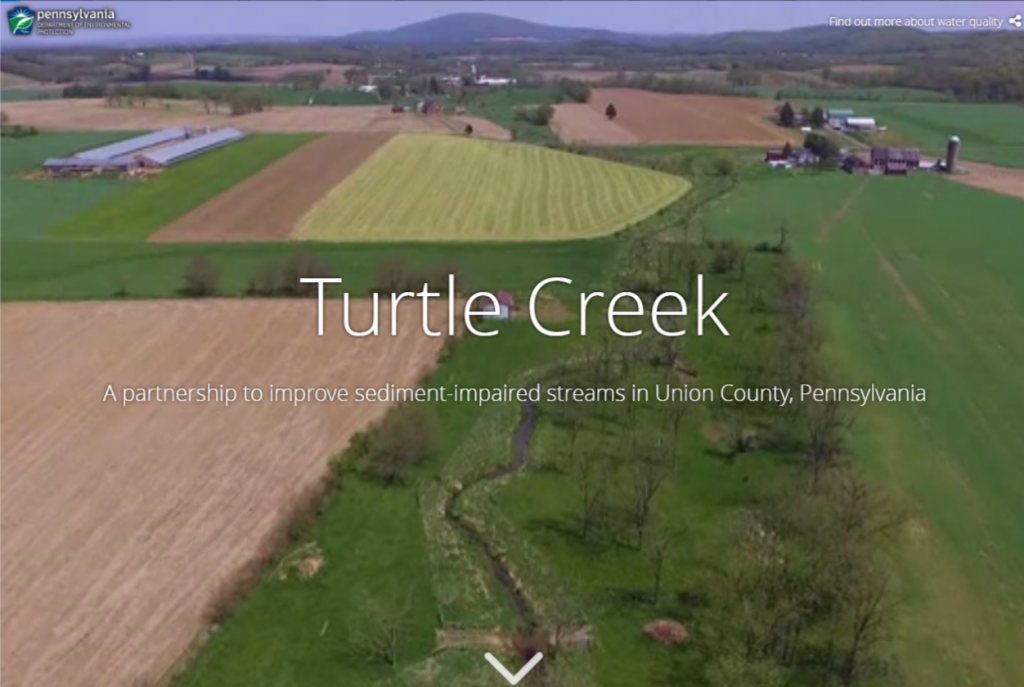NPC and the rest of the Northcentral Stream Partnership work together to decrease erosion and sedimentation, improve water quality, and increase aquatic habitat on agriculturally impaired streams in northcentral Pennsylvania.
The partners…
The partnership, led by NPC and including state agencies, county conservation districts, non-profit organizations, and willing landowners joined forces in 2009 to tackle the challenge of bringing the region’s local waterways back to health while maintaining a working agricultural landscape.
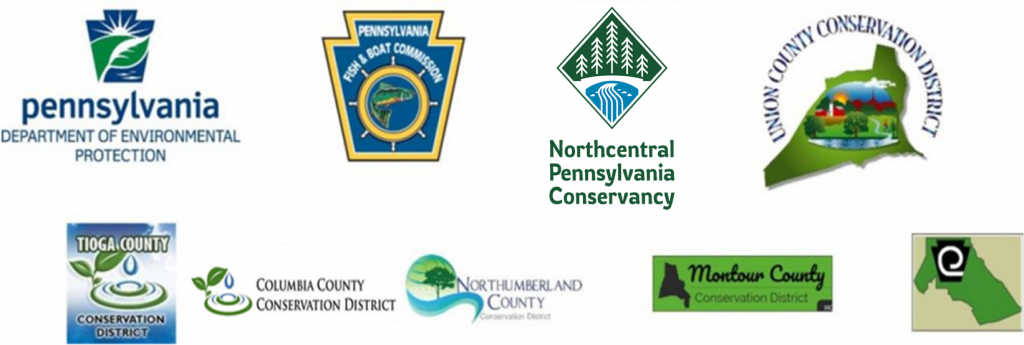
The problem…
Eroding stream banks are a direct source for sediment, Nitrogen, and Phosphorus to enter streams. This sediment smothers aquatic life as it covers the stream’s substrate. Reducing erosion and sedimentation into the region’s streams, is a goal of many local and state plans and initiatives working to improve the Chesapeake Bay.
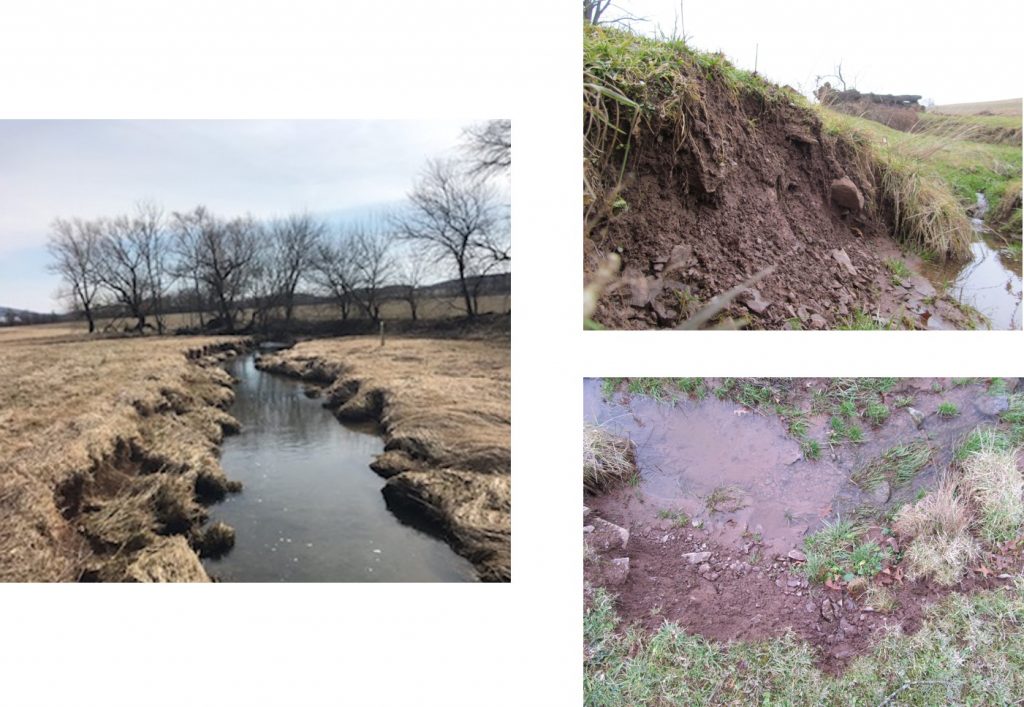
The solution….
The partners use proven in-stream stabilization structures, such as log vanes and mudsills, and Agricultural Best Management Practices (BMPs), such as walkways and fencing. The in-stream work is done to remove velocity and pressure from the streams banks and re-direct the water to the center of the channel. The BMPs help reduce the impacts livestock have on the streams by getting them out of the stream channel and keeping them farther back from the stream’s edge.
The stabilization structures are designed to work with the stream. When flowing water flows into something, it comes off the object at a 90-degree angle. By placing the logs at an angle into the stream flow, the water is re-directed back to the center of the streambed and the pressure of the flowing water is taken off the stream bank.
The logs of the stabilization structures also provide habitat for macroinvertebrates. Often there is no woody material in the stream, and the streambed is covered with fine sediment. The logs provide immediate habitat and allow the macroinvertebrates to re-establish while the fine sediments move out of the system.
Keeping livestock out of the riparian area allows vegetation to establish and filter nutrients out of water before entering the stream and also reduces the physical pressure on the stream bank. The practices work together to decrease erosion and sedimentation in the streams. The practices used in this project utilize recommendations and address major sources of nonpoint pollution highlighted in Pennsylvania Nonpoint Source Management Program.
-
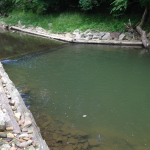
-
Log cross vanes (LCV) are essentially two opposing vanes connected in the middle. The logs are trenched into the bank, one on each side of the stream and meet in the middle. These devices are for grade control and center flow to the middle of the channel. This structure will also create a plunge pool, for added habitat.
-
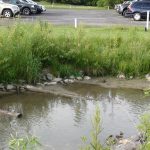
-
Multi-log vane deflectors (MLV) are typically used where this is a high stream bank. To build a multi-log vane, three logs are stacked together to form a pyramid. The logs are pinned together and secured to the stream bed. The butt end of the logs are placed in a long trench, angled into the stream bed. The log tips are angled upstream to help direct flows toward the center of the stream. Remember, water falls off objects at a 90 degree angle, by angling the end upstream, the water is pushed to the center of the channel.
-
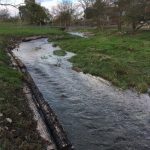
-
Mud sills are best suited to lower gradient streams with steep, eroded banks. The structure helps stabilize the stream bank by removing pressure from the banks. At the same time, a mud sill provides excellent overhead cover. The structure creates a stable under cut bank fish will use.
How the partnership works….
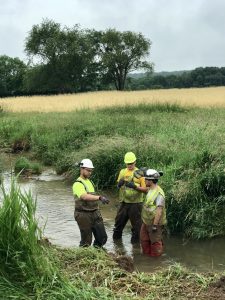 Funding is secured and administered by the Northcentral Pennsylvania Conservancy (NPC). Currently the partnership is working using Growing Greener Grant program awards.
Funding is secured and administered by the Northcentral Pennsylvania Conservancy (NPC). Currently the partnership is working using Growing Greener Grant program awards.
“Everyone does a little, so no one has to do it all.”
Northcentral Stream Partnership motto
The County Conservation Districts identify possible project locations during farm visits, or because a landowner comes into the conservation district office with concerns or questions. The Conservation District staff verify it’s in a Chesapeake Bay Priority Watershed as identified by US EPA and PA’s DEP.
DEP’s watershed manager and the PA Fish and Boat Commission’s (PFBC) stream habitat division review the project and conduct a site visit. At the site, they discuss if the techniques we use are suitable. An initial design is done. From that, a materials list is generated, and an estimate is made on how many construction days will be needed.
Once a construction schedule is finalized, the Conservation District staff begin submitting the paperwork to obtain the permits needed and ordering materials and supplies. At this point, local contractors are scheduled for the heavy equipment work.
Construction involves PFBC staff, Conservation District and interns. The construction process is very hands-on and labor intensive. Logs are placed, and then the stream’s response observed, adjustments made, and again the stream observed. Construction can take several hours or several days depending on the structures being installed and site conditions.
Project Progress
Since the first construction season in 2009, the partnership has worked at over 200 sites across the Northcentral PA region.
In 2024, the partnership celebrated the “delisting,” or removal, of 2 stream segments within the Turtle Creek Watershed.
The partnership’s sustained efforts to bring the waterways of Northcentral PA back to health while maintaining a working agricultural landscape is currently being used as a model to help improve water quality throughout the Chesapeake Bay.
Click the image to learn more about the partnership through their work on the Turtle Creek Watershed.